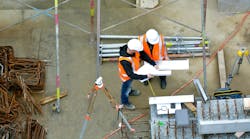The U.S. Department of Energy’s office of Energy Efficiency and Renewable Energy (EERE) Building Technologies Office (BTO) has issued a request for information to solicit feedback from industry, academia, research laboratories, government agencies, building owners and operators, builders, utilities, and other stakeholders on key issues related to building technologies that have significant and demonstrated potential to be utilized as cost-effective solutions to respond to grid conditions through demand-side management.
A DOE release said this information will be used by BTO for strategic planning of the broader grid-interactive efficient building technologies research and development portfolio.
Efficient and flexible building loads provide options to increase electricity system reliability and energy affordability, while also supporting a portfolio of generation options in grid modernization. To date, savings resulting from flexible building loads have been primarily achieved through traditional energy efficiency and demand management programs. However, advanced controls, sensors and data analytics developed over the last decade provide new ways to optimize building energy savings and energy use, by autonomously managing a variety of distributed energy resources including on-site solar panels, energy storage, electric vehicles, and various demand-side assets, while maintaining – and even improving – comfort to occupants, and contributing to a reliable, affordable grid. Substantial research and development related to advanced controls, sensors and data analytics is underway, and additional progress is anticipated. Through this RFI, BTO seeks input from industry to better understand where flexible building loads research goals can be refined to reflect market needs and inform related R&D activities.
The BTO is seeking information related to four categories:
Category 1: Building Technologies R&D and Integration Needs for Increased Load Flexibility
Category 2: Controls and Communication to Enhance Building-to-Grid Interactions
Category 3: Building Energy Modeling for Load Flexibility
Category 4: The Value of Flexible Building Loads
Responses to this RFI must be submitted by March 1, 2019.Here’s where you can find more information and download the full RFI: DE-FOA-0002070: EFFICIENT AND FLEXIBLE BUILDING LOADS



